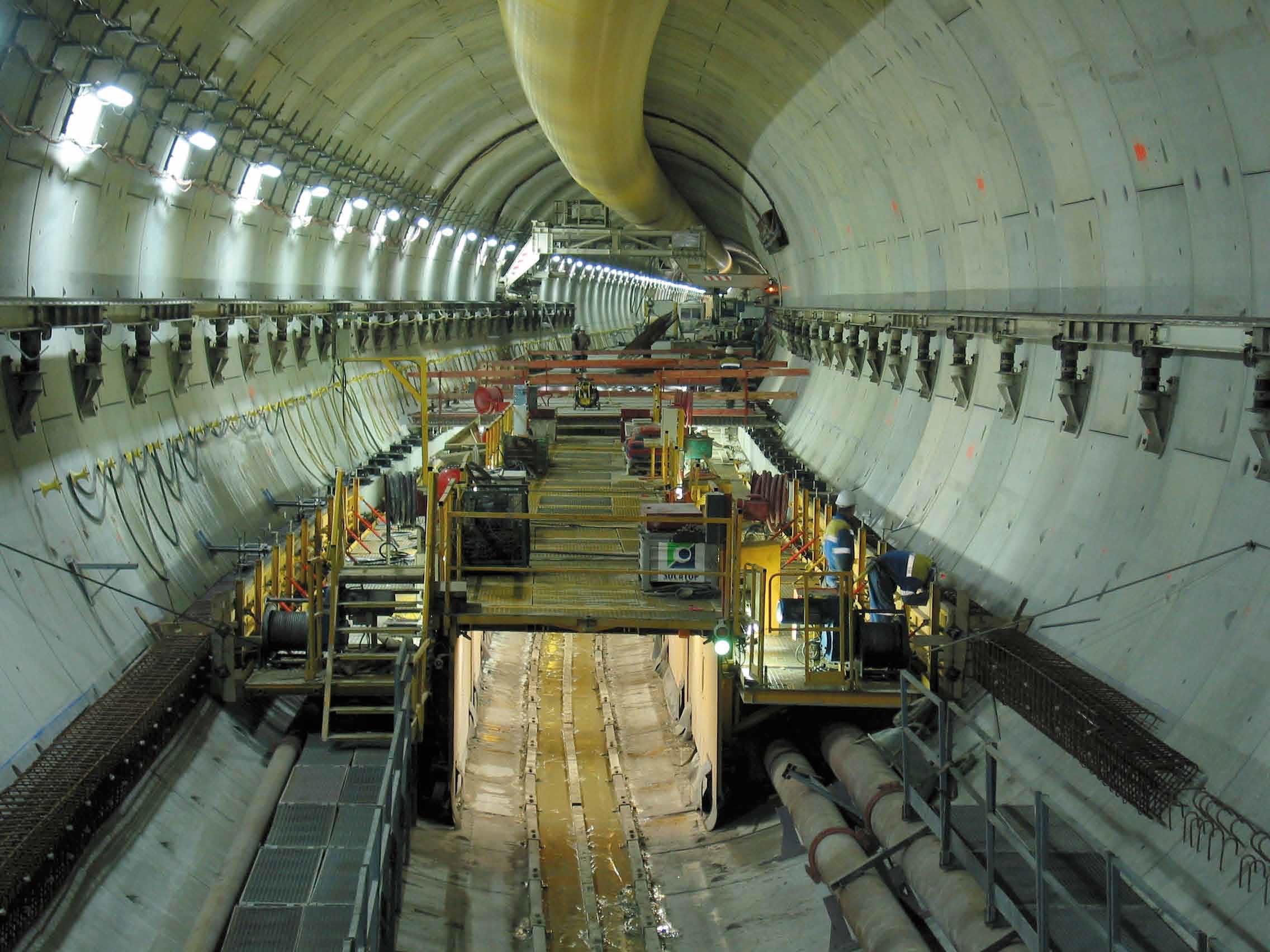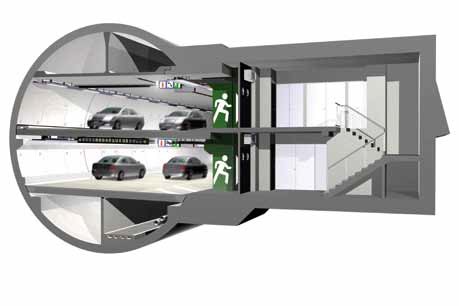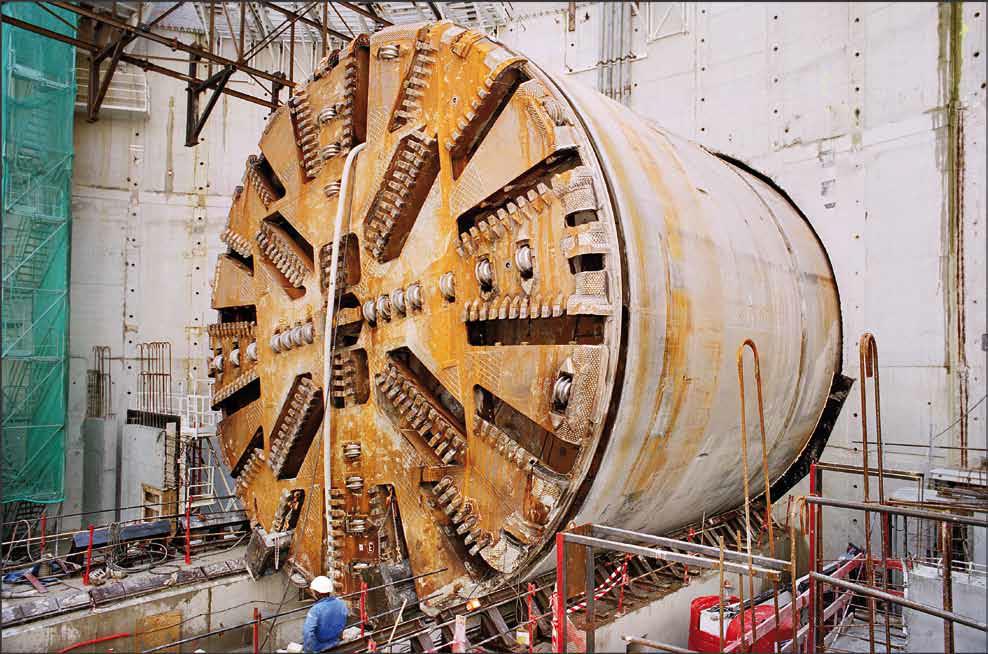

The motorway tunnel between Rueil-Malmaison and Vélizy completed the A86, Greater Paris’s second ringroad after the Périphérique.
Work on the A86 began in 1968. The first 50 kilometres went into service in 1994, and additional shorter sections were opened over the following years. The ten kilometre-long tunnel, the final link of the A86, was inaugurated on 9 January 2011, after uncertainties as to its route and the toughening of safety standards following the fire in the Mont-Blanc Tunnel in 1999.

© photothèque cofiroute

© photothèque cofiroute
A single-tube tunnel
The solution of a tunnel for the west section of the A86 was chosen to preserve urban fabric and cultural heritage sites, particularly around the Château de Versailles.
In 1999, the French State awarded Cofiroute the contract to build a tunnel solely for light vehicles, granting it a 75-year concession. The other projects proposed double-tube tunnels, whereas the less-costly Cofiroute solution consisted in a single, double-deck tunnel with one-way traffic on both levels. The A86 Duplex is the only two-way double-deck tunnel in Europe.
A world première
Soundings explored the subsoil and located water tables along the tunnel’s course. Only a tunnel-boring machine (TBM) could bore a ten-kilometre tunnel in a reasonably short time. Given the wide variety of terrain the tunnel had to traverse (sand, clay, limestone, chalk, etc.), Herrenknecht of Germany built the first-ever “two-in-one” TBM, capable of drilling through hard and soft layers by changing its shield in 24 hours.
In hard terrain, the machine’s rotating cutting heads used hardened tungsten steel cutting bits and disc cutters that chip away and fracture the rock. It was the excavated materials themselves that supported the bored area, which is why this boring system is called “earth pressure balance.” In soft terrain, the TBM used the “slurry pressure” system, which injects a clay sludge called bentonite which adheres to the tunnel’s walls and holds up the boring area by maintaining a balance between the earth and its own pressure.
Duplex A86, tunnel digging

© photothèque cofiroute
EMMA, the giant mole
The gigantic EMMA tunnel-boring machine was 11.56 meters in diameter and towed a 200 meters tracking train (the equivalent of three Métro carriages).
As it bored at a rate of 12 to 14 meters a day, EMMA installed concrete arch segments to consolidate the tunnel, advancing using its 42 hydraulic jacks to push off against the last arch segments.
Every TBM is purpose-built for the tunnel to be bored. EMMA was entirely dismantled after completion of the A86 double-deck project and its components were used on other TBMs.